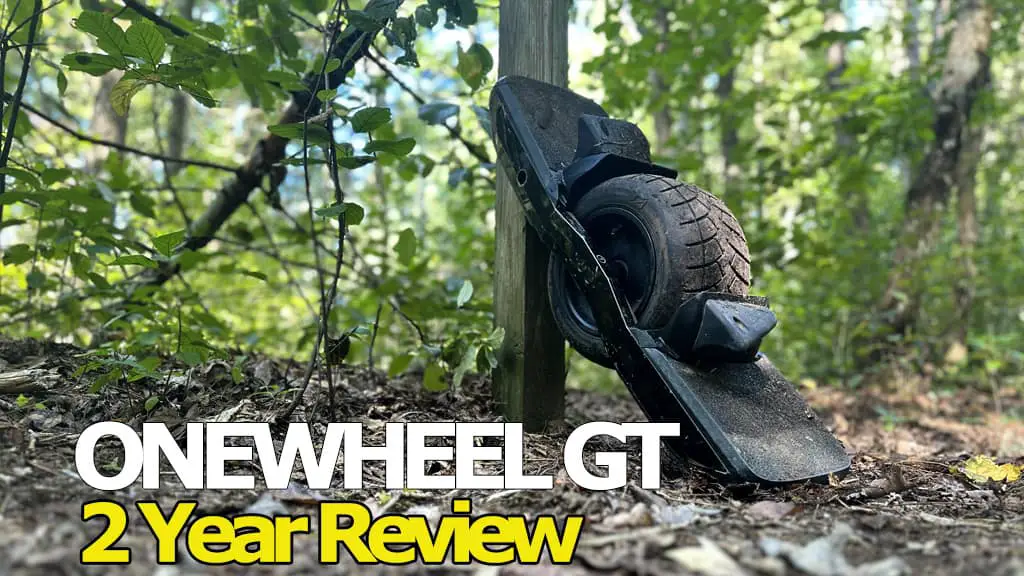
Two years later we finally have access to Digital Shaping 3.0 which is a tremendous leap forwards in regards to giving you more control of the feel of the ride while providing some great bonuses such as posi-sensor, jump re-engagement and a super-refined control over the preset ride modes which is far more control than what was possible on the XR.
Let’s discuss the pros, the gripes, Onewheel GT-S and off-brand competition to see if the GT is still a good buy. In a nutshell here are my thoughts after two years:
Pros:
Cons:
Onewheel GT Gets Better With Time
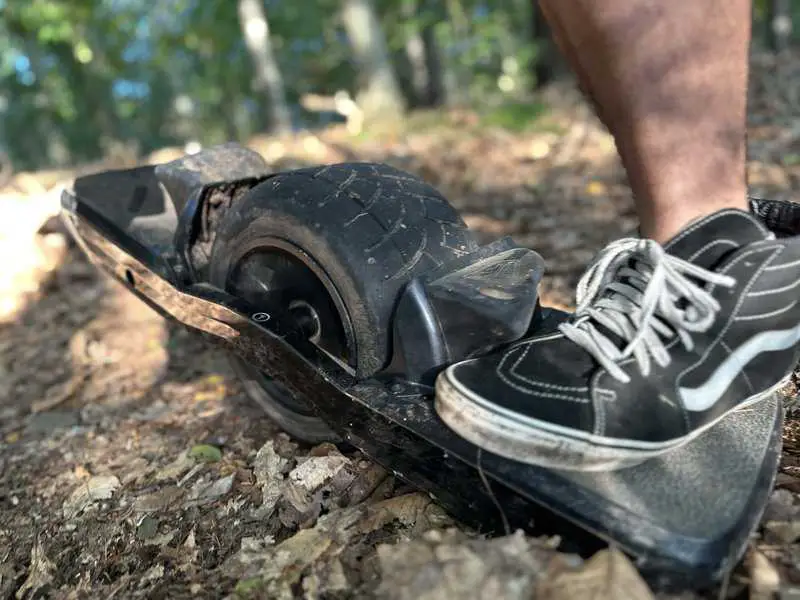
Two years ago, I avidly road my extended range XR after about two years of building it to a great range board. If you have ridden an XR and went to a GT, you know that ride comfort is better on the XR. I largely believe it is due to the 6″ tire that was used on the XR. Having that extra sidewall height really makes a difference especially if you avidly ride your Onewheel.
While the GT was notably more powerful than the XR, when I first purchased my GT, I still used my XR just as often (range was similar and at the time, it felt just as powerful). As I slowly pivoted more of my ride time on the GT, I realized that the board just has more power than my XR and it eventually was too good to not choose over my XR.
The GT also has great range for a standard unmodified board. It wasn’t the greatest board around when it first launched but now that there is a huge aftermarket, the board rocks!
Growing Aftermarket For Onewheel GT
The massive perk of Onewheel GT is that the aftermarket continues to grow and I would say at this point it has eclipsed the Onewheel XR aftermarket which makes the Onewheel GT as customizable and fun to ride as its predecessor – the XR.
Currently the GT remains a very popular Onewheel. During the initial launch of the GT, I would say that the huge disadvantage was that there was extremely limited availability for aftermarket parts. Customization and modifications has grown tremendously as most performance parts and accessories have since hit the market.
Performance treaded tires from Future Motion and a growing number of aftermarket tires from popular brands keep pumping out new rubber. Rails, cooling options, foot pads and more. There is no end really to the aftermarket and this is a huge perk in my opinion because you have complete control and customization to the board.
The GT is Still a Range King for Onewheel Trail Riding
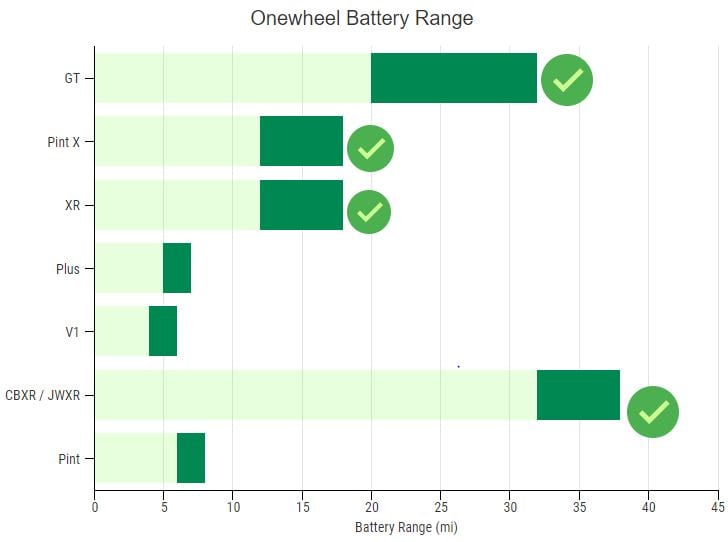
You can achieve a better range on a modified XR, but if you aren’t looking to tinker with your Onewheel, then the GT’s range is still impressive and holds to have the best range standard from Future Motion.
The XR and Pint X can make for good trail boards as well however with the added power of the GT, the GT still remains superior.
Future Motion Available Parts For Purchase
Future Motion recently made their Onewheel GT S-Series motor assembly available for purchase. While it is currently priced at a jawdropping $850, it does show that the Onewheel brand is committing to empowering riders with the ability to repair and replace parts on their own Onewheels.
In the early years, you would not have seen even replacement tires as an option to purchase. All servicing was done via shipping the board into the Onewheel headquarters or DIY. I honestly still think having the board shipped in for service isn’t a bad option. The prices are not that bad but having parts available for you to complete the job yourself is huge. With tires, motors, foot pads and sensors, perhaps we will eventually see BMS, batteries and controllers as options for purchase.
Again, while those cannot be purchased yet, their servicing can help and there is always the option to convert your board into an opensource VESC board if some of those components need replacing. There are options! which is a good thing. Regardless that the pricing on some of these is a little bit high, it does seem to be heading in the right direction.
6.5″, 6.0″ and 5.0″ Tires
6.5″, 6″ and 5″ refer to the hub size of the wheel. The reason why 6.0″ is a great size is the availability – its a standard go-kart tire size. When Future Motion modified their design to accommodate only a 6.5″ hub, then it became apparent that the reduction in the sidewall height of the tire made for a stiffer ride. There is plenty of criticism for the stiffer ride but its not like Future Motion can just offer different hub sizes.
To accommodate different hub sizes, you need a different hub and I truly do not see Future Motion making that change at this point (considering their launch of the GTS). Instead, Future Motion supports their 6.5″ hub design with options. They launched a Performance Treaded tire that keeps the same 6.5″ hub size but widens the tire. I just cannot see them offering an XR hub size (6.0″) at this point.
Aftermarket however is listening. Brands like Techrails and Floatlife offer 5.0″ hubs which provide space for a tire with a larger sidewall. If you are not familiar with tire sizing, the first number is the total height of the tire in inches. We only have so much space we can fit between the footpads. With a large hub, the sidewall of the tire has to shrink. Inversely is true when you have a smaller hub.
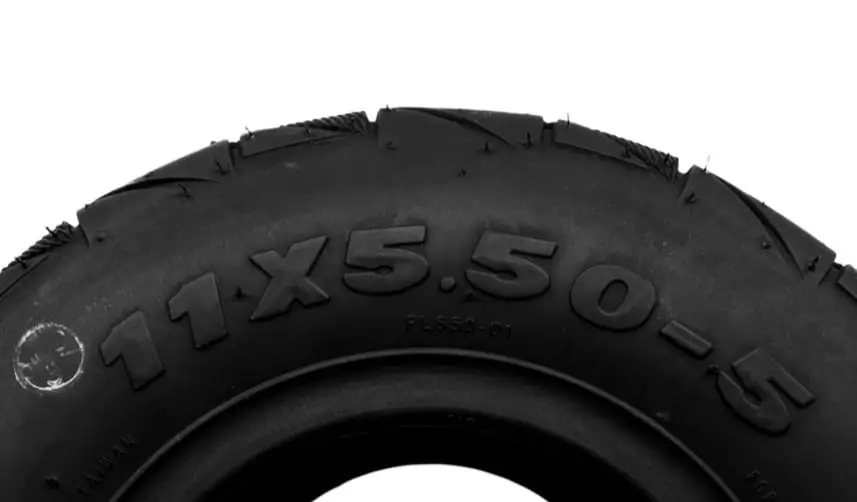
Anyway, the smaller sidewall is somewhat annoying but the GT is very capable of long rides. If you find yourself not a fan, you have options!
No More Digital Tilt and Haptic Buzz
With the latest firmware, Haptic Buzz was added and the ability to modify the tilt of the board was removed. After the software recall of 2023, Haptic Buzz was added to make the board safer and while it probably is more annoying for veteran riders, it does make the board safer for newer riders who can now feel when the board has reached its limit.
Riding pushback (while not advisable) was completely doable prior to this update. feeling that subtle pull-up on the nose let you know your speed. With Haptic Buzz, it is not comfortable to ride the higher end speed of the board as it is continually buzzing until you lower the speed. We also lost the ability to modify the ’tilt / level’ of the board which works well for riders with custom (angled) rails.
The concession here was that you would have access to Digital Shaping 3.0 which unleashed total customization for the board and honestly has made me fall back in love with my GT. My board was already modified with a tilt so I was able to keep my settings prior to the update. The Haptic buzz an be annoying but I would still choose it for the digital shaping availability.
Price and Weight of Onewheel GT
I think for new riders, the price is still a shocker (even for riders that love Onewheel it can be a shock). Currently priced at $2,300, the GT has a hefty tag but you do get a lot of range for that price. With range however, you get a heavy board (35lbs / 16kg). There’s no way around having a light board and a range monster. If you want the range, you do learn to deal with the weight of it, but let me tell you that lugging around a GT is no fun. Always make sure you can ride it because carrying it is brutal.
GT S-Series and VESC Boards
With the price being so high and the release of the Onewheel GT S-Series (I just call it the GTS), I do find myself craving now even more power. Boards like the Floatwheel ADV are also viable considerations as its way more power for even less money.

Either one of these boards would totally satisfy my want. I don’t have a need for more power or speed but it surely is a want and this is where I’m left at after 2 years.
I love my GT. The board has given me zero issues since I’ve purchased it. If you stay on top of the XT-60 connector and heat issues, this board is very reliable. Now however Future Motion releases the GTS which was a great marketing move on their part. The board is the same dimensions as the GT but has far more power.
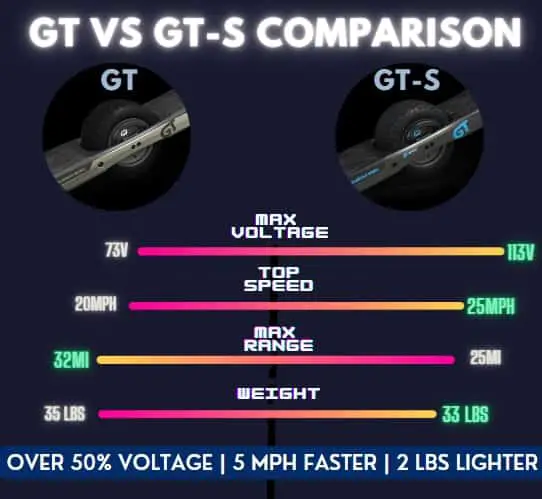
I don’t need a Floatwheel ADV or a GT-S, but I want it. I gained the confidence and ability to handle the GT at its max and now i want (keyword is want) to have a GT-S or Floatwheel for that added performance.
There’s been few hill climbs where the GT cant cut it with my weight (weighing 190 lbs) and I do think a GT-S would perform with no problem, but I don’t need it.
Summary
If you are getting your first Onewheel and budget isn’t much of a consideration, I would spring for a GT-S because the power is notably increased with just a little concession on range. Floatwheels are an option however they are not as easy to purchase. The GT is still a recommended buy in my opinion, but now riding after two years I want more.
If you think you will want more power, just get the GT-S. All the aftermarket fits this board the same which is great and if you are considering to do anything in regards to modifications to a GT such as a tire, foot pads, etc. Just know that the GTS has some perks such as PT treaded tire and Low-boy foot pads so consider the savings there (assuming you were going to spend that money on the GT).
Verdict: If you are not too concerned with the latest and greatest, the GT is a solid board. If you think you would eventually spend a little money upgrading the GT, just get a Floatwheel or GT-S.
